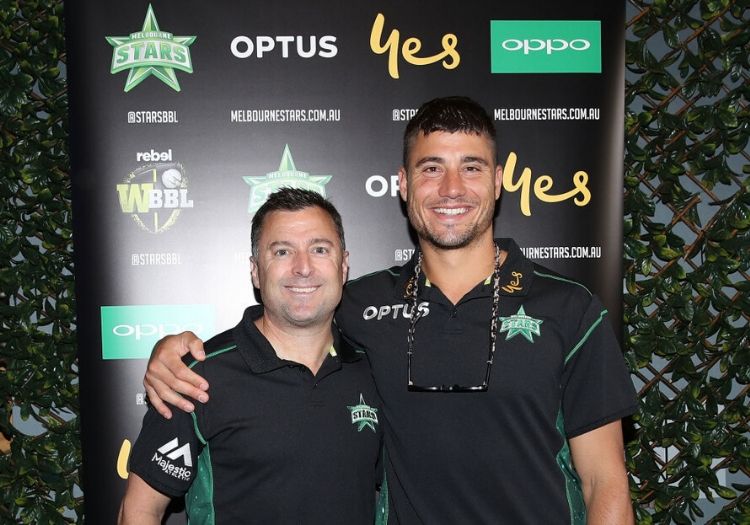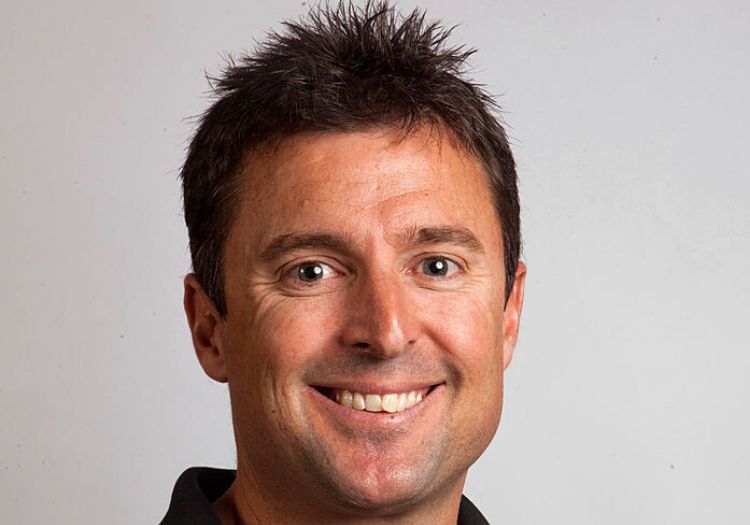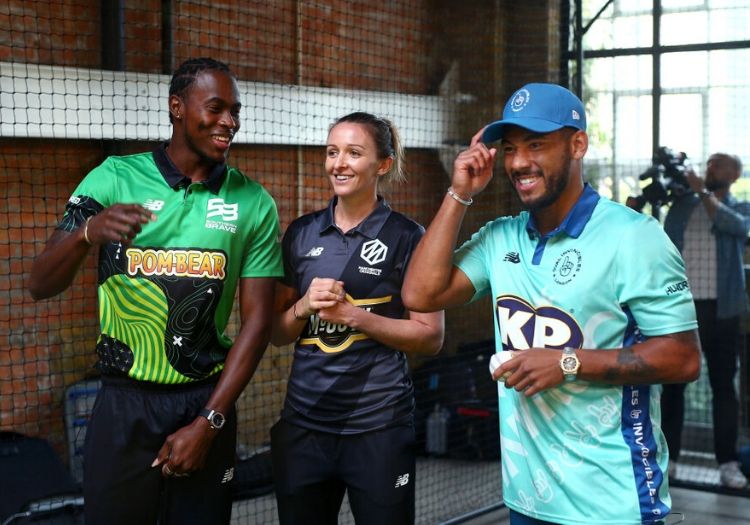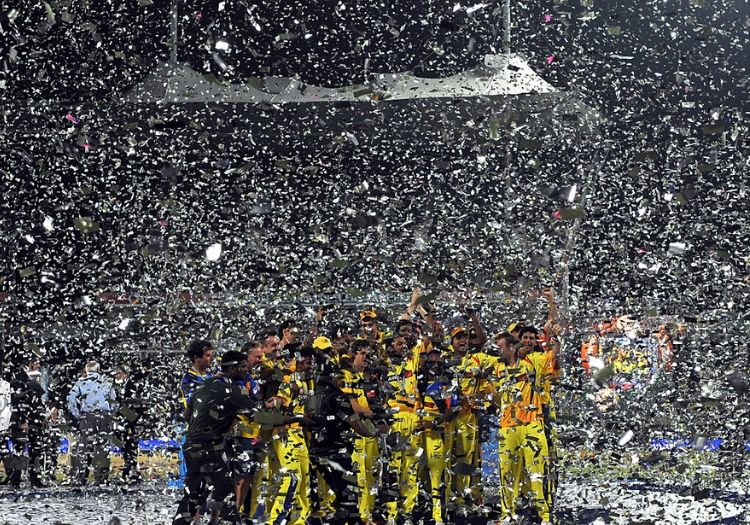HUW TURBERVILL speaks to the freelance coach who has played a key role in the development of the ECB's new 100-ball competition


You seem a real Anglophile?
Yes, I’ve been coming to the UK since 1990. I was a batsman who played club cricket for Brentwood, and Broad Oak in Huddersfield (I scored 1,000 runs in the year there). I met two of my best friends in Yorkshire, including Michael Fraine, the father of Will Fraine, who now plays for Yorkshire. I also had a year as player-coach at Carrickfergus, just north of Belfast. I went thinking it was probably going to be a bit of Ballykissangel, and it wasn’t. There was still lots of tension with the Troubles, but this club was unbelievable, it was fantastic. Later AB de Villiers played there. When I arrived they told me that nine of the first team from last year were gone; they’d either retired or left, so not only was I going to have to play a bigger role than I’d anticipated, but we had to win. We managed to stay up, but it was a shock to the system having not played for three years because of a hand injury. The pro the year before was Damien Wright, who played for Australia A. I also had a year at the Grange, Edinburgh. I lobbed up in pre-season: there were no turf nets because we were washed out, there were two synthetics and there were 70 players, so what do you do? This gave me a grounding for coaching. I love club cricket, playing with doctors, lawyers, accountants and students – they became really good friends. It was also great watching Test cricket, talking about it in the bar, then trying to do it in club cricket.
What about grade cricket?
I played for Bankstown, in Sutherland, Sydney where the Waugh brothers come from. I was an average first-grade cricketer. I’m big mates with Danny Waugh. People say he was the best Waugh, but Steve was the best. Danny was the best fielder.
You had coaching stints in county cricket…
Yes, coach exchanges with Surrey (2005) and Kent (2008). At Surrey I was working as an analyst with Steve Rixon, who was a mentor of mine, and I got on well with Alan Butcher, who really helped, and Geoff Arnold. Graham Thorpe was senior pro. They took me under their wing. Thorpey came out and coached in New South Wales at the end of his career, so we’ve known each other for a long time now. Then at Kent, Graham Ford, Rob Key and Darren Stevens were just fantastic. That’s why I have this passion for county cricket. Since the 2001 Ashes, I’ve supported England!
Maroš Kolpak: The man who unwittingly changed county cricket
I bet Australians love that!
Yeah, and one of my best sporting memories is watching England v West Germany in a pub in Brentwood during the 1990 World Cup. I’m also a Liverpool fan, because [Australian] Craig Johnston played for them. That is why I don’t want to be seen as yet another hired gun from Australia. I’ve got a long, rich history here – my friends in Huddersfield are like family.
So how did you get into coaching?
I studied sports science at university – it was a nothing-else-to-do job. But I just found that I was drawn to coaching because I enjoyed helping people. I get just as big a thrill out of somebody doing well on the back of my help than me playing well myself. Graeme Rummans was playing for St George against Bankstown. He was struggling with his cut so I tried to help him. After lunch, he came out and hit two cuts for six, and the whole team just looked at me and said, “Why did you do that?” He went on to play for New South Wales and Victoria. It was at that moment that I realised that I really enjoy coaching.
How did you break into pro coaching?
I started with New South Wales, working with David Warner, Nic Maddinson, Phil Jaques, Adam Zampa, Ed Cowan. It’s interesting how everyone has a back story, and that shapes who you are.
So it’s coaching for you rather than pure analytics?
I think I’m probably renowned as a specialist batting coach, but I think my strength is around players’ preparation and the mechanics.
You are a walking database though!
Yes but it’s more because I’m interested in it. I’m a massive baseball fan. We have to keep challenging ourselves to get better, not just with analytics and data mining, but just how we look at a sport and how we can improve it; not change per se, but that as society changes we change with it, and that we continue then to be able to grow the traditions of the game. Cricket is surviving because T20 and The Hundred are doing well, which is providing a new onus, new fans for Test cricket, and that’s fantastic.

Trent Woodhill has worked with Melbourne Stars, Delhi Chargers, New Zealand and Royal Challengers Bangalore
What was it like to work at the IPL?
I was the analyst at Delhi (2009-13), then assistant batting coach at Bangalore (2013-18). A decade of IPL was wonderful, madness. It was stressful in the end… there was so much riding on it, especially in a ground like Chinnaswamy, with Virat Kohli as your captain, and the noise is something that you will never forget. You’re looking for some peace and quiet to think through something, and it’s not there, which is great when you’re winning but not so much when you’re losing! There was a game against Chennai when we were behind the whole game and I knew we were going to lose, and MS Dhoni just stole it, and you just knew. And all you could do was just sit and watch. I have also learnt a lot from working with Stephen Fleming (head coach) at Melbourne Stars (2012-), and Dan Vettori (captain) when I was assistant coach with New Zealand (2010-12).
You have worked with Steve Smith…
For 15 years, yes. So at worst we had a hit once a year and a whole lot of WhatsApp chats, at best we might have a hit three or four times a year. I helped him and he helped me. Steven’s been really good for my batting coaching career because I realised from a young age that he was different, and I needed to figure out why he was different and why it worked.
So how can somebody who moves so much at the crease and has so many mannerisms and idiosyncrasies be so phenomenal and miss the ball so infrequently?
Because he’s so competitive, he watches the ball as well as anybody ever has and he has embraced his technique. I was so protective of that and him as a young man – I was never going to let anyone mess with his technique. There were some big Australian names who told me that I was wrong – they have now forgotten that they ever said it. I said this kid is a gun, and you’re messing him up by trying to make him into something that you don’t even understand; you want him to look like you… but he’ll be better than you. So Steven and I have a healthy respect. I love things that are unorthodox, unorthodox people, non-conformers – no two of my friends are the same. I like difference in the world, and my dad is a very conservative 78-year-old Australian male, loving, caring, but he’s instilled in me: always push people and ask questions, don’t settle for an answer that a) you don’t agree with, b) don’t believe in or c) that you know is wrong. I’ve probably mellowed but I was prickly in that I wasn’t going to let an Australian great tell me what was wrong and right about something that I knew more about.
You have told me that Kane Williamson, Kohli and Smith never feel ‘in’.
Kane and I stayed in contact from my New Zealand days. When I first started with Kohli in 2013 he hadn’t settled on who he was as a person or a player. And Virat, Steven and Kane have evolved into a similar person when it comes to batting: they’re not looking to be comfortable at the crease, they’re not looking to be perfect, they’re looking to win every contest. And there’s nothing more important than the next ball. It might sound that simple, but those three guys love batting more than anyone else I know. Warner is a little bit different – he can see the end line in cricket and find a way of getting there. The other three you have to tell them when the game’s over, and they don’t know when they’ve won because they still want to keep doing it, and it’s unique because everyone who’s ever played cricket knows what it feels like to play a good shot, even if it’s one a season. And it’s a drug you want more of. The thing with those three is that after each ball, bang, it’s gone, and then they are into the next ball. So they’re never satisfied, never comfortable, but then they can reflect on what they did… I’m really jealous because it’s a unique ability to be able to bat long periods of time.
You also had a stint with Pakistan…
Yep. That was outstanding: it came out of the blue. I was working with Mushtaq Ahmed and Eric Simons at Delhi, I was expecting my first child, and I got a phone call from the head of Pakistan cricket saying we want you as batting coach. I kept saying no because my wife was expecting a son in about three months’ time, and they kept asking, and I said, can I come over for the Champions Trophy in 2013, and then next thing you know there are reports saying “We want Woodhill, but we only want him for the Champions Trophy because we are going to give him a trial”, which was brilliant spin! So I came and worked for Dav Whatmore, and I felt for him because it wasn’t his appointment, it was higher up the food chain. But Dav and I hit it off really well, him and his family were lovely and it was good because it was the first time I was employed as a consultant, so I felt like I didn’t have anything to prove – I could just be me and offer my advice. So I worked with guys like Shoaib Malik, Mohammed Hafeez, and unfortunately, we lost all three games: to South Africa, West Indies and then India at Edgbaston. In that latter game, we were 165 all out. That was amazing being in a Pakistan coaching camp playing against the Indians. That night we were sitting on the bus, and I was sitting across from Hafeez and the bus is really quiet. The manager gets up and says something in Urdu, and everyone looks at me. I said to Hafeez, who is just a lovely guy, “What’s going on?” he said “We aren’t allowed out of the hotel, and they’re blaming the batting coach.” Now that’s pressure!

The Hundred is set to be the central pillar of the summer
And now for something completely different… The Hundred. We know many of our readers are unconvinced. Woodhill tries to persuade them…
How did you land the role?
I had 10 years at the IPL, nine in the Big Bash, and I worked in the T20 in 2005 with Surrey and 2008 with Kent. I feel I have a good understanding of what a short-form high-performance tournament is.
What does your role entail?
To cover everything high-performance… format, players, umpiring, presentation of the game. We want to make it the best short-form tournament, in terms of standing, in the world.
Why will The Hundred be good?
Domestic players can make a name for themselves against top overseas players, on the BBC and Sky. It will give fans high-intensity moments. No, the Indians won’t be there, but the Pakistanis who are not at the IPL will be, like Shaheen Afridi… plus Andre Russell, David Warner, Mitchell Starc and so on. You can recover better in this format – 30 for 4 chasing 180. Like a Test, the games change on a knife-edge because you can have one great 10-ball over. The Laws of cricket will still be there. We’re not abolishing lbws! It’s my job to ensure the fabric of the game isn’t messed with.
And a bowler can bowl 20 of the first 25 balls (or 20 of the last 25)?
Part of my remit was rebalancing the bat v ball contest. In T20 it has shifted towards batting dominating – bats are getting better, batsmen stronger. Every now and again a Rashid Khan, Starc, Sunil Narine or Lasith Malinga comes along – they have had an impact, but in that time there may have been 30 batsmen dominating. With this format – a bowler can bowl five or 10 balls, 20 of the first 25, or 20 of the last 25, and that will give the bowler, or captain, more of a chance to stay on top. In T20 with six balls, you get one bouncer, here you have two in 10. It may mean totals are smaller, but there will be better duels: Jofra Archer v Jonny Bairstow, for instance. I am also a baseball fan and love a pitching duel: Clayton Kershaw v Justin Verlander, 0-0 going into the seventh. Mohammad Amir, Nathan Coulter-Nile, Tymal Mills, Harry Gurney… radar gun going wild. If you are a part-time batsman or bowler, you may find it hard. This will help England identify players in one specialist skill.
The format speeds the game up…
My pet hate in the IPL was watching Virat Kohli and AB de Villiers at the start of the seventh over until the 20th running from long-off to long-off. The best players want to be in the best positions. With 10 balls and only nine changes of end, they can expend more energy chasing balls rather than running into position. Players can use breaks to strategise rather than run into position. I’ve been at IPL games where it’s 1am, Big Bash at 10.45pm. Too late for kids. Conferencing is banned. People don’t pay money to see people talk. You’re not going to dehydrate, your gloves aren’t going to be unusable, in 100 balls. Fall of a wicket, fine, but unless it’s a time-out you can’t change equipment unless your bat is broken in two.
Although not official The Hundred policy, you have argued for results to be by balls remaining, not by wickets. Why?
You know when you walk up and hear Australia have beaten Sri Lanka by eight wickets? That doesn’t tell me anything. You have to dig deeper and discover Australia won by eight wickets with two balls left. It’s about developing a language for cricket that new fans can understand. To say 60 runs needed off 34 balls is easier than 5.4 overs. They say Matt Parkinson has two overs left, but that will be no different to saying he has 10 balls left…

Trent Woodhill brings with him experience of the IPL
You also have a personal preference – again this has not been adopted yet – for batsmen not to be allowed to cross if there is a wicket…
Yes. Bowlers should get a reward for taking a wicket. So if a batsman is caught, the batsman who is on 70 off 30 balls shouldn’t face, the new batsman should. What other sport rewards mediocrity?
Getting rid of overs… isn’t that sacrilege?
Overs have never been paramount to cricket – it’s been four, six and eight balls – it’s still 22 yards… balls is the language of T20.
Could you have played four, five, 10, even 20 balls from one end?
The consensus from the trials and working group was that 10 balls from an end worked.
People are worried. They say it’s a risk to deviate from the world-standard T20…
T20 has a great ringtone but this is a better formula. IPL is an outlier – it works because it’s India. Time isn’t a concern there…
Will this kill county cricket?
No. High performance cannot kill anything. It’s giving 96 English cricketers exposure against high-quality overseas, all the while earning more money, which allows players to explore their game. The counties get £1.3m per year from the ECB, so facilities, pitches and salaries will benefit.
Some of the team names are… unusual…
I’ve seen Stars v Renegades in front of 80,000 at the MCG. Four years before, no one knew what a renegade was. Kids see colours, performances, smiling faces…
Do you think India and others will follow?
The IPL is looking to innovate next year with a super-sub, so who knows, they could be playing The Hundred in years to come. The Big Bash could well do: 200 balls in two and a half hours is right for families.
Anything else to persuade our readers?
English umpires will be used. They are the best! The Ashes would have been a better contest for spectators and players with an English umpire and an Australian. With the technology, it’s not like the old days.
Subscribe to The Cricketer for exclusive content every day: The inside track on England's Test tour with George Dobell in Pakistan, award-winning analysis, breaking news and interviews and the only place for in-depth county coverage all year round. Plus: An ad-free app experience at your fingertips. Subscribe to thecricketer.com today for just £1.